
2022-05-04 12:00:00
GLOBAL RENEWABLES UP TO 85% IN 2021
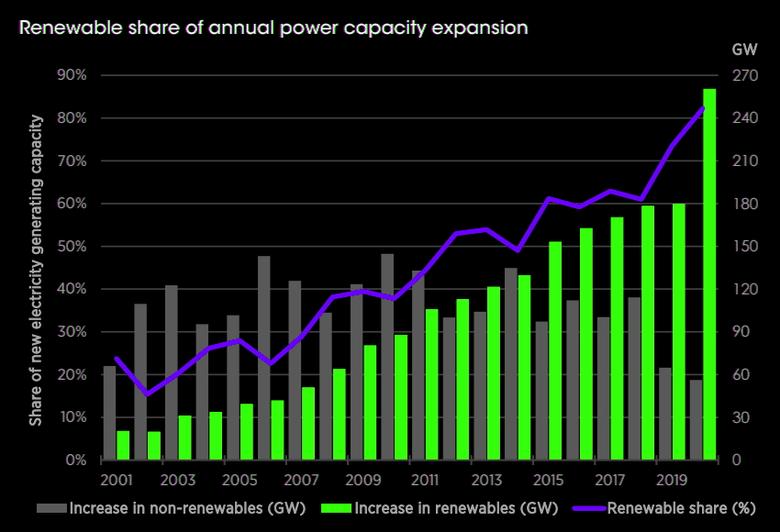
By ANDREW BLAKERS Professor of Engineering Australian National university
ENERGYCENTRAL - Apr 26, 2022 - In 2021, solar PV and wind comprised about three quarters of global net generation capacity additions. Adding in the other renewables brought the figure to 85%.
Figure 1: global net capacity additions. Data is drawn from the International Renewable Energy Agency, The Australian Clean Energy Regulator, the Global Wind Energy Council, the World Nuclear Association, the Global Energy Monitor and the International Technology Roadmap for PV
Earlier:
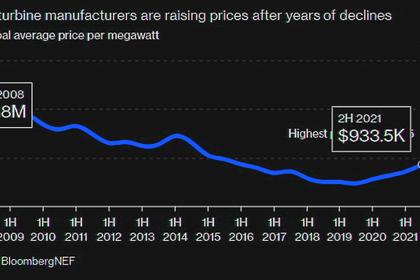
2022, April, 26, 14:00:00
GLOBAL RENEWABLE ENERGY MARKET DOWN
A retreat from wind power could have devastating consequences, as it is set to play a pivotal role in global efforts to transition to green energy.
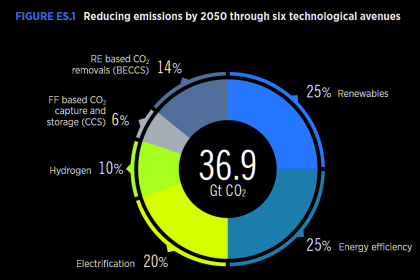
2022, April, 20, 11:20:00
GLOBAL RENEWABLES UP TO 3 064 GW
By the end of 2021, global renewable generation capacity amounted to 3 064 Gigawatt (GW), increasing the stock of renewable power by 9.1 per cent.
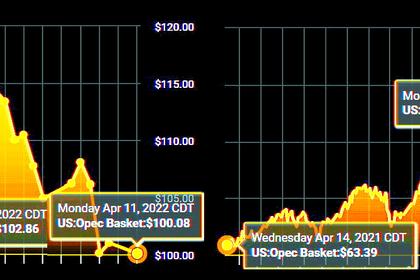
2022, April, 13, 12:55:00
GLOBAL OIL DEMAND 2022: +3.7 MBD
For 2022, world oil demand growth is revised down by 0.5 mb/d to stand at 3.7 mb/d, mostly reflecting the downward revision in world economic growth. Oil demand growth is forecast at 1.9 mb/d in the OECD and 1.8 mb/d in the non-OECD.
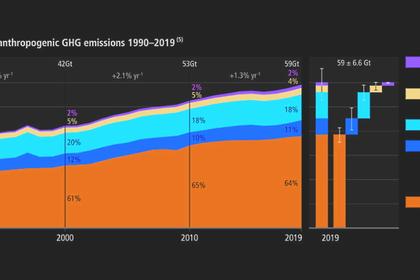
2022, April, 5, 13:40:00
GLOBAL CLIMATE DISASTER
We are on a pathway to global warming of more than double the 1.5-degree (Celsius, or 2.7-degrees Fahreinheit) limit” that was agreed in Paris in 2015.
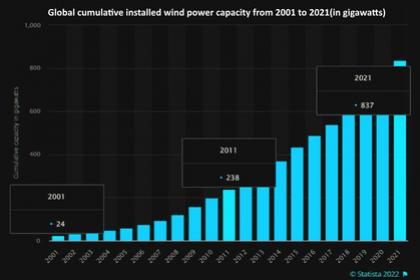
2022, April, 5, 13:30:00
GLOBAL WIND CAPACITIES 837 GW
According to the Global Wind Energy Council (GWEC), the global wind capacity increased by 93.6 GW in 2021 (+12%), to 837 GW.

2022, April, 1, 11:15:00
GLOBAL CLIMATE DISRUPTION, HAVOC
“Despite growing pledges of climate action, global emissions are at an all-time high,” Mr. Guterres warned. And they continue to rise, he said, adding that “the latest science shows that climate disruption is causing havoc in every region already.
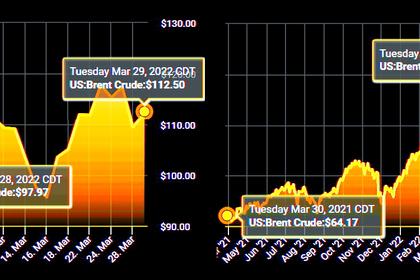
2022, March, 29, 13:30:00
GLOBAL ENERGY, COMMODITY CRISIS
The sanctions against Russia are the hardest we have seen against any country to date and in particular the decision to freeze $600bn of Russian foreign reserves is a first, which will have huge consequences in the long-term.















